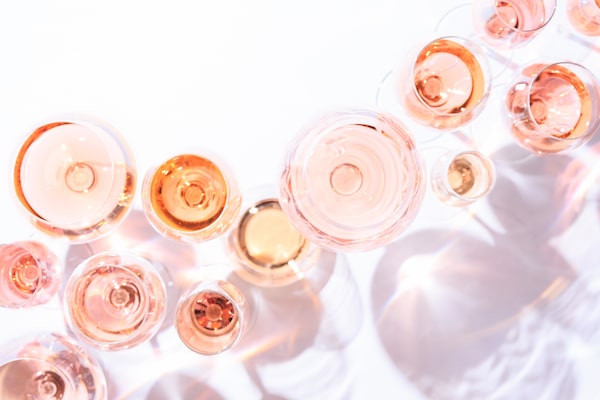
iStockPhoto / Getty Images
It started with Rosé All Day. Sparkling wine followed suit, increasingly showing its pink side. Shortly after, came rose-tinged sour beers and a swath of ciders that had a peachy glow. More recently still, the spirits world also started to colour up, with the emergence of a half-dozen new pink gins on Canadian shelves.
Why is the beverage industry suddenly in the pink? Well, for a range of reasons, starting with the most straightforward – marketing. A pink hue is an excellent way for a product to stand out.
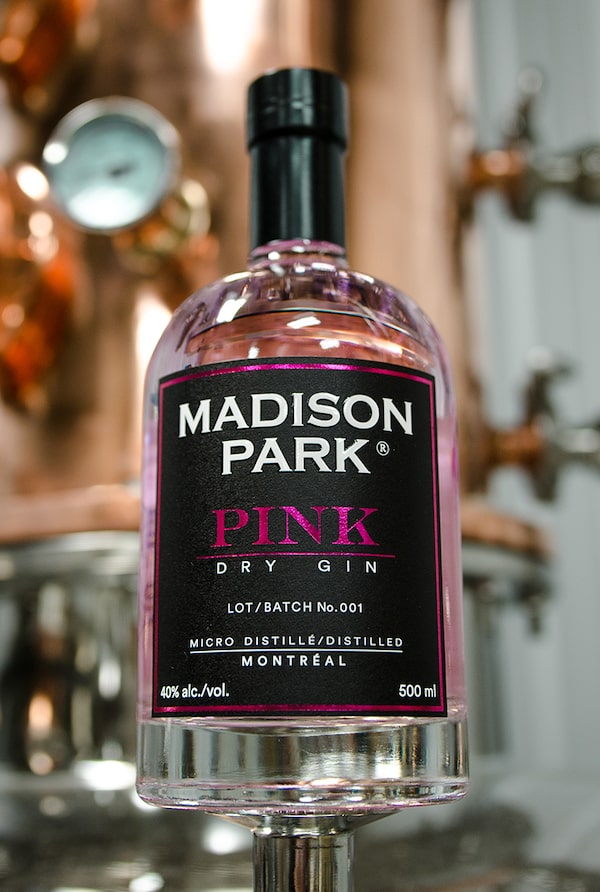
Madison Park Pink Dry Gin is made my Montreal distiller Andrew Mikus.
“Colour sells,” says Andrew Mikus, a Montreal distiller whose Madison Park Pink Gin has done well in Canada and abroad. “And, for craft distillers, social media is the great equalizer between us and the big guys, so we thought about our options to give it an edge.” Google “millennials” and “colour,” Mikus notes, and “millennial pink” comes up at the top.
This strategy hinged, however, on its being the only pink gin on the market, and that’s no longer the case thanks to several imports (many flavoured and sweetened) and many craft options, including a Colossal Pink Gin from Bohemian Spirits in British Columbia, Muskoka Brewery’s Pink Peppercorn Gin and Burwood’s pink Honey Berry Gin from Calgary. Add to that multiple rhubarb, strawberry and rose gins plus the butterfly pea flower gins, such as Victoria’s Empress Gin and Montreal’s Bleu Royal, that start out purple or blue and turn pink with the addition of tonic water or lime. It’s all highly Instagrammable.
Given the proliferation of pink, we might expect this to be a short-lived fad. The wave of rose-gold ciders and blush wines, though, tells another story – one that can explain a deeper matrix of cultural associations underwriting this trend, which is likely to give it legs.
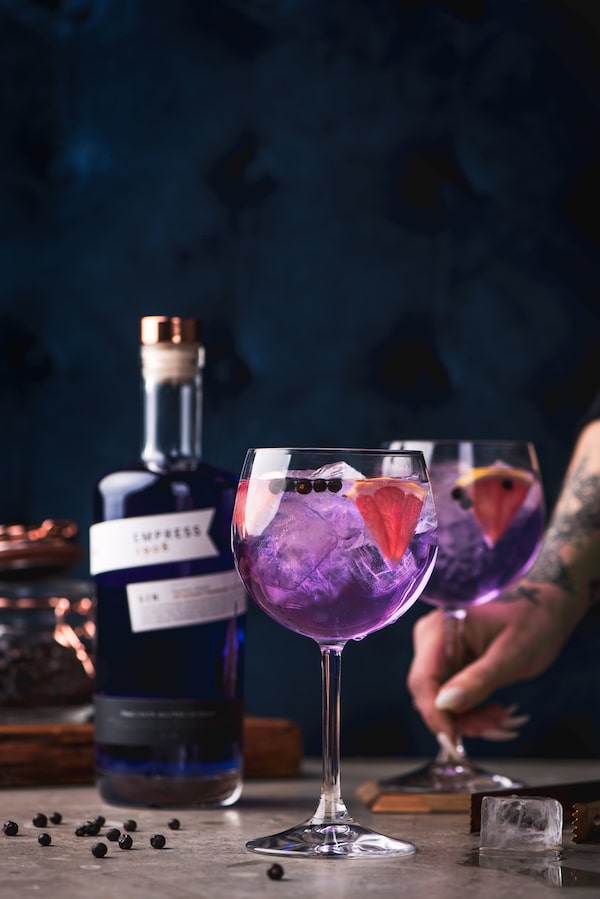
Victoria's Empress Gin starts as a rich purple and changes to pink with the addition of other cocktail ingredients.
Colour associations are culturally specific and, in most of Western Europe, pink drinks aren’t a trend but a normal colour result you’d expect when fermenting certain fruits or applying specific wine- and cider-making techniques. Besides rosé wines from Provence, brut rosé expressions of crémant, cava and Champagne are common and, when you poll people about their favourite Lambrusco, many prefer the fresh, light-pink ones to the thick, purple, grapey ones. So pink isn’t new, it’s just that North Americans have been slow to twig to the gorgeous light fruit and added layer of complexity found in high-quality, dry pink wines. That might have something to do with the white zinfandel trend in the 1990s that ruined the colour’s reputation.
“I think there’s been a real resurgence in allowing some colour into your beverage,” says Jordan Ramey, co-founder of Burwood Distillery in Calgary, which does a special annual release of a pink gin. “For a while, anything that was a pink wine, people would think of as a bottom-shelf product. But people aren’t afraid of wines with a little bit of colour any more. I think people are really starting to equate it with fresh again.”
Drink. Hungover. Repeat. Why do we keep doing this to ourselves?
What makes Naramata Bench wines so special?
Toasting 200 years of blended rosé champagne, drunk year-round
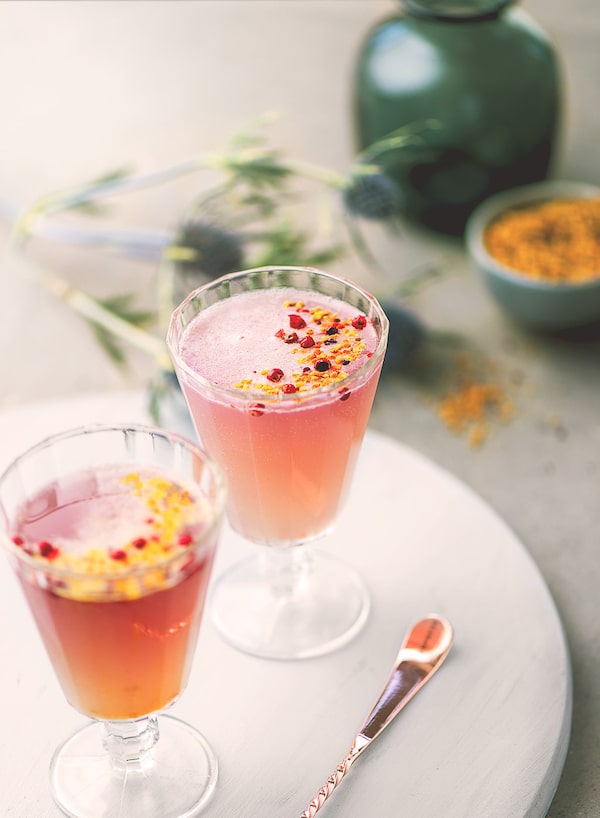
The Pollinator, made with Victoria’s Empress Gin.
Ramey puts some of that association down to the colour of berries, pomegranate and other foods with a healthy rosy glow, some of which are grown in abundance in Canada and finding their way into beers and ciders. Another factor in all this, though, has been the rise of natural, skin-contact, pet-nat and rosado wines and ciders, many of which are a cloudy light pink or orange colour.
“We have a lot of skin-contact ciders that we do on cherries, and we did one on red plums recently that we called Dressed Up to Party, because it’s pink and gorgeous,” says Tariq Ahmed, founder of Guelph’s Revel Cider, which is also releasing Soif this season, a cider that spent a month on gamay skins. “But we’re always approaching it from a flavour, aromatic and textural standpoint. If we get a gorgeous colour at the end, great.”
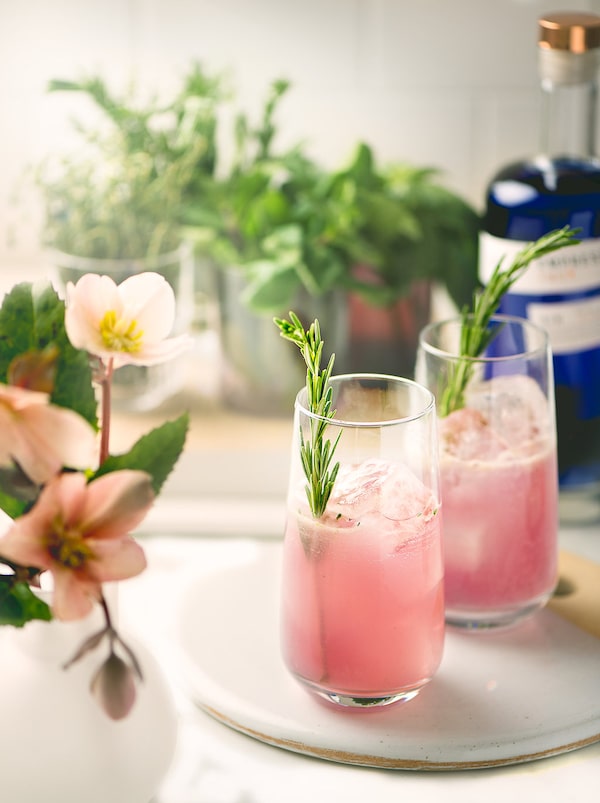
The Windsor Garden cocktail, also made with Victoria’s Empress Gin.
If that colour happens to be not only appetizing, but also hot on the fashion scene, even better. Pink, once associated with sweetness and passivity, is being recast into a colour of power, self-confidence and assertiveness.
“I think there was a time where women, especially professional women, were scared of exhibiting their femininity and felt that, if we wanted to succeed, we had to be more like men,” says Nafissa Ismail, an associate professor at the University of Ottawa’s school of psychology. “Now, we’re no longer scared of expressing who we are. And pink has become more prominent in our society because of that.”
It’s not the first time, says Dmitri Logounov, director of operations at New Design Group, which often counsels clients on when to use pink in graphic design. “In the beginning of the last century, boys were associated with the colour of pink, which was a colour of strength,” he says. “Men are starting to wear lots of pink again. I myself have a pink dress shirt that I wear to special meetings. It makes a big impact. It lightens up the board room.”
Pink drinks, then, aren’t going anywhere any time soon. Even men are into Rosé All Day – at least in Western Europe and North America, while other countries may be a little slower on the uptake.
“I don’t drink wine personally, but yes, you see it, especially in Canada. I wouldn’t say, for example, in Russia, where I grew up, that it would be a likely drink for men,” Logounov says. “Too girly.”
Live your best. We have a daily Life & Arts newsletter, providing you with our latest stories on health, travel, food and culture. Sign up today.